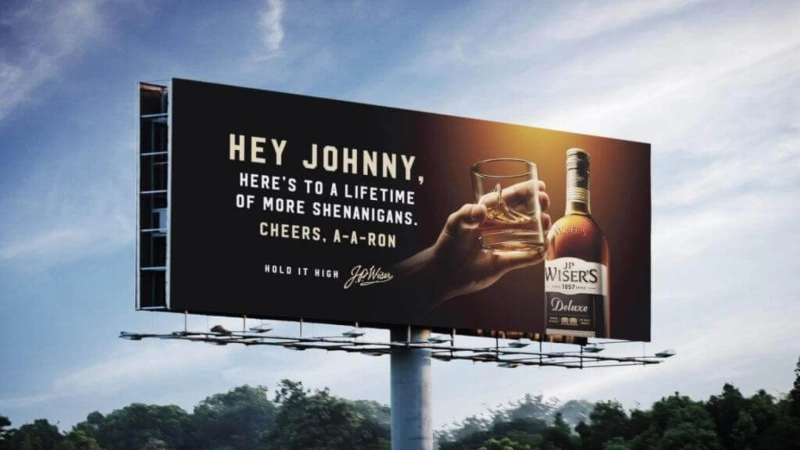Billboard advertising has become an iconic feature of modern landscapes, dominating highways, cityscapes, and even rural areas with its eye-catching displays. However, the presence of billboards is not without its regulations and restrictions. Governments at various levels, from local municipalities to national authorities, have implemented laws and guidelines to govern the placement, content, and size of billboards. These regulations aim to balance the interests of advertisers with those of communities, ensuring that advertising remains effective without detracting from the aesthetic or safety of the surroundings.
At the heart of billboard regulation is the issue of zoning. Zoning laws dictate where billboards can be placed, often designating specific areas for outdoor advertising. For example, billboards might be restricted from residential neighborhoods to preserve the tranquility of these areas and prevent visual clutter. Similarly, they may be prohibited near schools or historic sites to maintain their integrity and ensure the safety of pedestrians and drivers.
In addition to zoning regulations, many jurisdictions impose restrictions on the size and height of billboards. These limitations are intended to prevent oversized structures that could obscure views, detract from the natural landscape, or pose hazards in the event of severe weather. Height restrictions, in particular, are often implemented to minimize distractions for drivers and prevent visual obstructions that could contribute to accidents on nearby roads.
Content regulations also play a significant role in billboard advertising. While freedom of speech protects the right to display a wide range of messages, certain types of content may be subject to restrictions. For instance, advertisements featuring explicit or offensive material might be prohibited to maintain community standards and protect vulnerable audiences, such as children. Similarly, misleading or deceptive advertising may be banned to safeguard consumer rights and prevent fraudulent practices.
Moreover, some jurisdictions require advertisers to obtain permits or licenses before erecting billboards. These permits typically involve a review process to ensure compliance with relevant regulations, including zoning, size, and content restrictions. By requiring permits, authorities can exercise oversight over outdoor advertising, addressing any concerns raised by local residents or stakeholders.
Environmental considerations also influence billboard regulation, particularly in scenic or ecologically sensitive areas. Some jurisdictions impose strict controls on outdoor advertising in national parks, conservation areas, or along scenic byways to preserve the natural beauty of these landscapes. Restrictions may include limits on the number of billboards, their size, and even the use of lighting to minimize nighttime visual pollution.
Can I design my own billboard advertisement?
Absolutely, designing your own billboard advertisement can be a thrilling and rewarding endeavor. Not only does it give you creative control over how your message is conveyed, but it also provides a unique opportunity to engage with your target audience in a visually impactful way. Here’s a comprehensive guide to help you navigate the process and create an attention-grabbing billboard advertisement that effectively communicates your message:
Define Your Objective: Before diving into the design process, clearly define the purpose of your billboard advertisement. Whether it’s to increase brand awareness, promote a specific product or service, or convey a particular message, having a clear objective will guide all your design decisions.Know Your Audience: Understanding your target audience is essential for creating a compelling billboard design. Consider their demographics, interests, and preferences to tailor your message and visuals to resonate with them effectively.Keep it Simple: With billboards, less is often more. You have a very limited amount of time to capture the attention of passing viewers, so opt for a simple and concise message that can be understood at a glance. Avoid cluttering your design with too much text or unnecessary graphics.Focus on Visual Impact: Since billboards are primarily a visual medium, prioritize impactful imagery that grabs attention and reinforces your message. Use high-quality images or graphics that are relevant to your brand and resonate with your audience.Choose the Right Fonts: Selecting the appropriate fonts is crucial for readability, especially considering that billboards are typically viewed from a distance. Opt for bold, easy-to-read fonts that are legible even from afar. Avoid using fancy or overly decorative fonts that may be difficult to read.Consider Color Psychology: Colors evoke emotions and can significantly influence how your message is perceived. Choose colors that align with your brand identity and evoke the desired feelings in your audience. For example, red can convey urgency or excitement, while blue can evoke trust and reliability.Include a Strong Call to Action: Prompt viewers to take action with a clear and compelling call to action (CTA). Whether it’s visiting your website, calling a phone number, or visiting your store, make it easy for viewers to know what step to take next.Design for the Environment: Consider the location and surroundings of your billboard when designing your advertisement. Make sure your design stands out against the backdrop and is visible from a distance. Take into account factors like lighting, traffic patterns, and viewing angles.Test and Iterate: Once you’ve created your initial design, gather feedback from colleagues, friends, or focus groups to identify areas for improvement. Iterate on your design based on this feedback to ensure it’s as effective as possible before finalizing it for production.Work with Professionals: If you’re not confident in your design skills or lack the necessary resources, consider hiring a professional graphic designer or advertising agency to bring your vision to life. They can offer valuable expertise and ensure your billboard advertisement achieves its intended impact.By following these guidelines and putting your creativity to work, you can design a captivating billboard advertisement that effectively communicates your message and captures the attention of your target audience. With the right combination of visuals, messaging, and design elements, your billboard has the potential to make a lasting impression and drive meaningful results for your brand.
Top of Form



